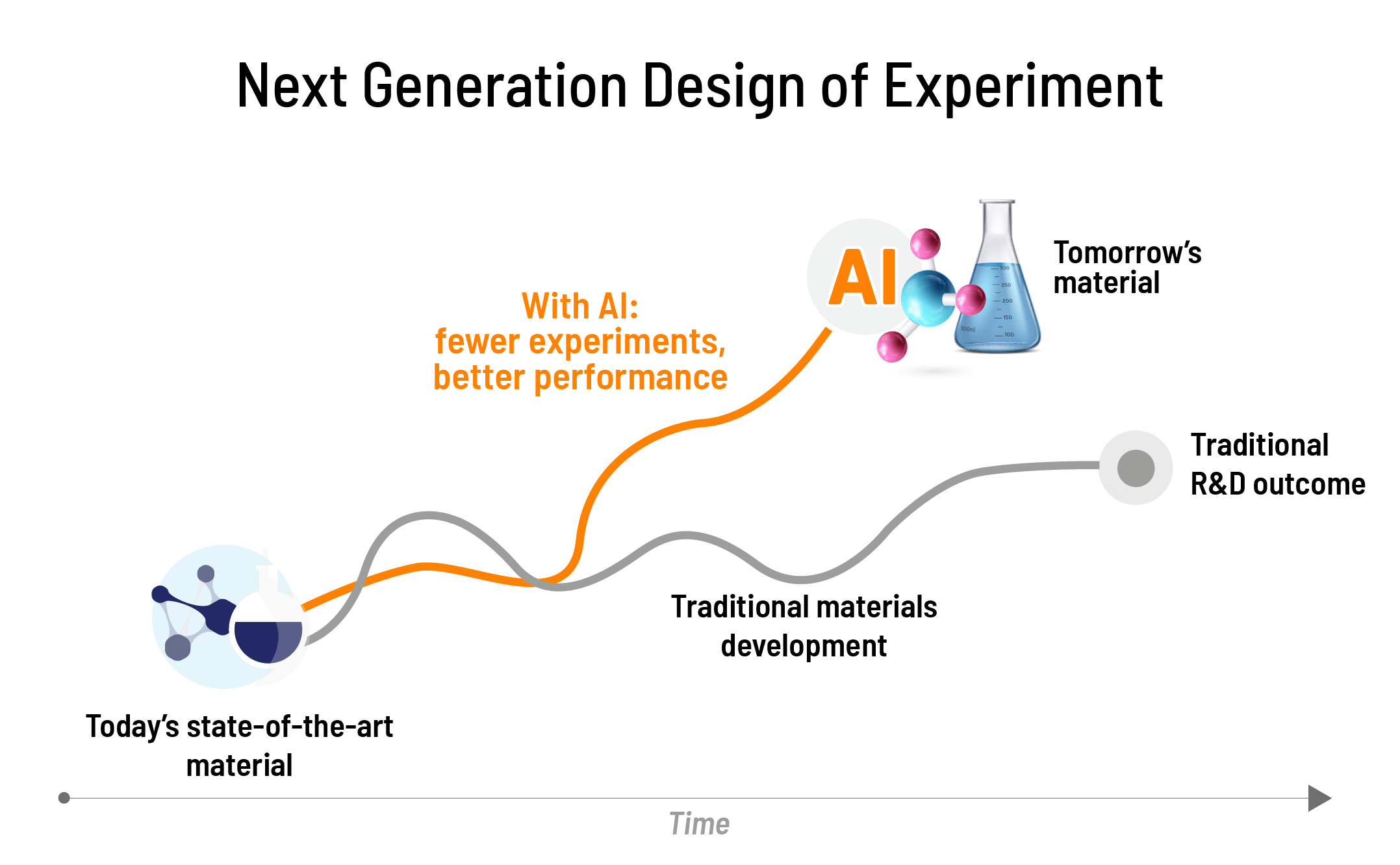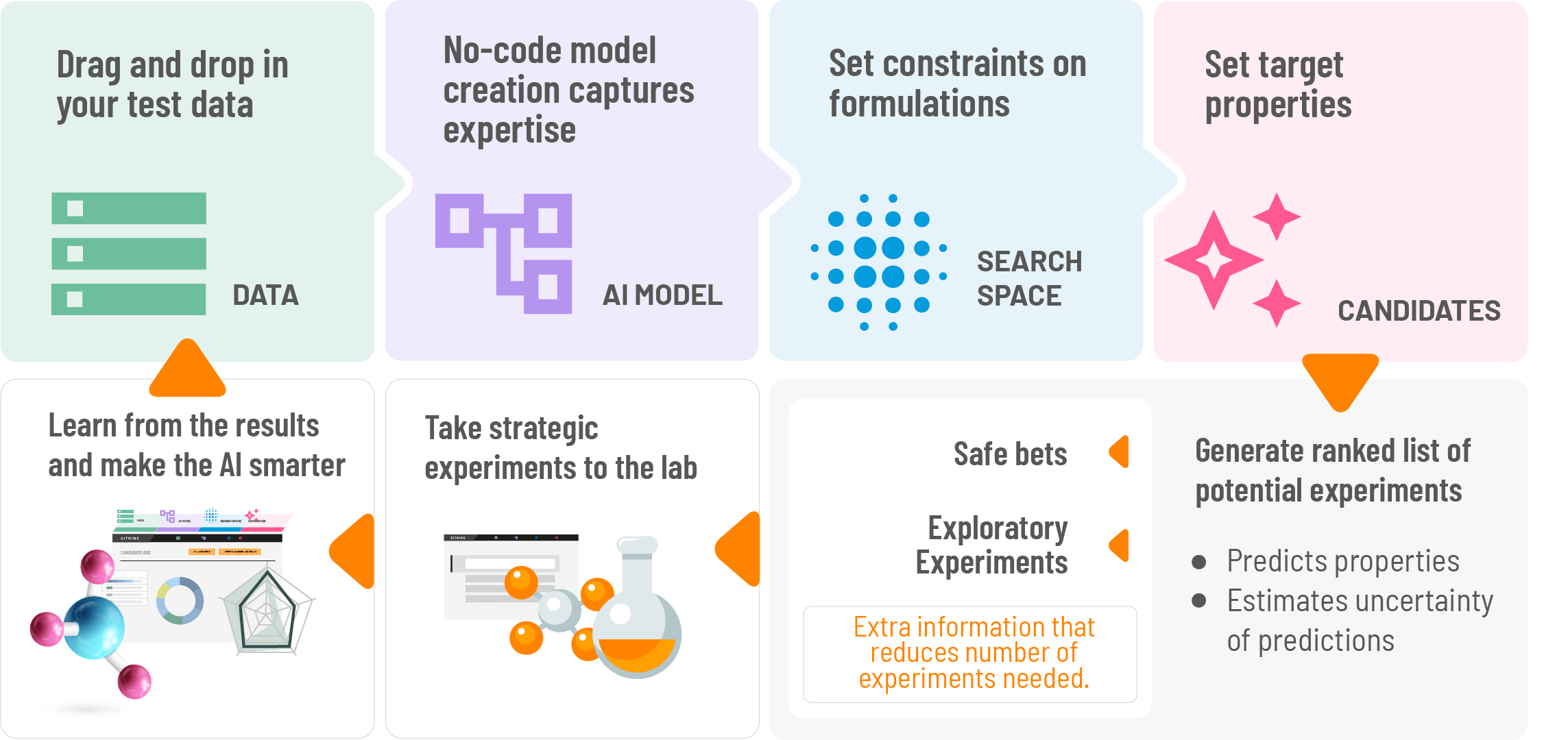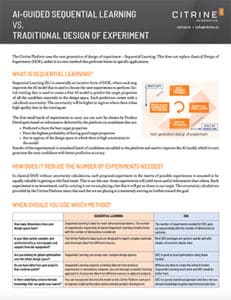Design of Experiment (DOE) or Machine Learning
Which method uses the fewest experiments?

Citrine has seen a 50%-90% reduction in the number of experiments needed to reach target performance.
The traditional approach to materials and chemicals research uses a combination of scientific intuition and design of experiments (DOE) methods to choose which experiments to carry out next. When carrying out a grid of experiments for DOE, each experiment is equally likely to succeed or fail. Some experiments are not pushing you forward to your goal.
When you use AI to predict the properties of materials, you also get an estimation of the predictions uncertainty. Some candidate experiments will be sure bets and others more exploratory. Researchers are presented a ranked list of experiments and their likelihood of success and can therefore be more strategic about what they take to the lab next.
It’s this extra information that means that fewer experiments are needed to hit target properties. With AI-driven research, every experiment takes you closer to your goal.
“I’ve spent so much time trying to get our scientists to use DoE tools, and I’ve had much better adoption with Citrine. It goes to show how important the usability is.” – Melissa Helm, R&D Manager, Process Chemistry & Technology, Stepan
What Is AI-driven iterative experimentation?
AI-driven iterative experimentation (sometimes called Sequential Learning) is an iterative, AI-guided R&D methodology where each experiment<>modeling loop improves the AI model that is used to help select the next batch of experiments to perform.
The AI model identifies promising candidates to synthesize and test in each round. Including uncertainty in each prediction is critical to get the most value out of this approach.
Uncertainty is calculated for each prediction to help scientists understand:
- the likelihood of achieving target properties
- the number of candidates that could achieve particular properties
- which areas of the output space the AI model is still uncertain about
This additional information is used to suggest the next batch of experiments. Researchers can then be strategic in choosing to run an experiment that has high uncertainty, but great predicted properties, or an experiment where the properties are OK and the likelihood of hitting them is high. Empowering product experts with this extra information reduce the number of experiments needed to reach performance targets by 50-90%. You can read our Case Studies to see how this pans out in practice.
Once a round of experiments is run, the results are imported back into the platform and the AI model retrained, making it more accurate and improving its ability to suggest the next best experiment to run.
Using the Citrine Platform you can model 26 properties as easily as 2 properties just by adding in some new columns to Excel.
When should you use DOE?
AI-driven Sequential Learning is not always the right option. Here is how to decide which methodology to use.
Sequential Learning
DOE
How many dimensions does your design space have?
Sequential Learning
Sequential learning is ideal for multi-dimensional problems. The number of experiments required by AI-based Sequential Learning remains linear with the number of dimensions considered.
DOE
The number of experiments needed for DOE goes up exponentially with the number of dimensions to optimize.
Is your data varied, complex, and unstructured (e.g. micrographs and outputs from lab equipment)?
Sequential Learning
The Citrine Platform’s data tools are designed to ingest complex materials and chemicals data from different sources.
DOE
Most DOE packages are generic and do well with simple, structured, tabular data.
Are you looking for global optimization over the whole design space?
Sequential Learning
Sequential Learning can survey vast, complex design spaces.
DOE
DOE is good at local optimization using linear models.
Do you have data from past projects that could be useful?
Sequential Learning
Sequential Learning requires a training data set from previous experiments or simulations. However, you can leverage a transfer learning approach to incorporate data from different sources or adjacent projects.
DOE
Without any data to create the initial AI model, Sequential Learning won’t work and DOE would be better here.
Is there underlying science/domain knowledge that can guide your search?
Sequential Learning
You can incorporate this into the model on the Citrine Platform and use it to improve model performance and accelerate product development.
DOE
DOE is a purely statistical approach and does not use domain knowledge to guide experimental selection.

